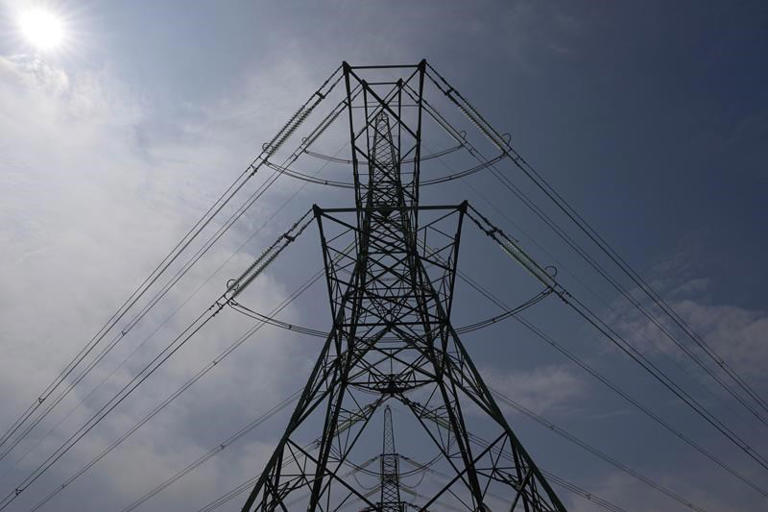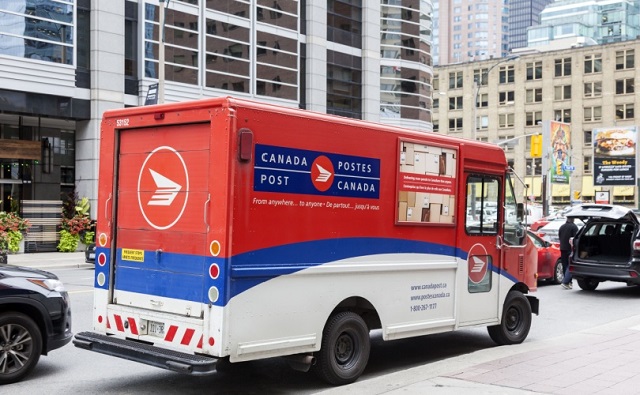Alberta
Federal electricity regulations threaten Albertans with high costs and power outages

Alberta responds to dangerous federal electricity regulations
Alberta has submitted detailed analysis showing why proposed federal regulations will threaten the province’s electricity grid.
Alberta is rapidly reducing emissions and targeting a carbon-neutral grid by 2050. Electricity emissions have declined by 53 per cent since 2005 and the province will have phased-out all coal generation by early 2024.
However, in August, the federal government released its draft Clean Electricity Regulations, which propose rigid rules to try and achieve net-zero electricity by 2035.
Based on expert analysis and industry consultations, Alberta’s government has submitted a detailed response outlining the technical problems with these regulations. The province’s analysis found that these regulations are unrealistic, ineffective and could compromise grid reliability to an unacceptable degree, resulting in the very real risk that Albertans will not have access to an essential service, like power, when they need it.
“These regulations are irresponsible and reckless, setting unrealistic targets and even banking on technologies that don’t exist. They will result in Albertans shouldering an unbearable cost for an electricity system that will no longer deliver the safety, reliability and affordability upon which our lives depend. We will not permit these dangerous and unconstitutional regulations to be imposed upon our province.”
“The standards and enforcement that Ottawa is proposing would put the safe, reliable and openly competitive market of Alberta’s electricity system at risk, all for targets that aren’t feasible or realistic. We cannot allow the reliability of our electricity to be compromised and risk public safety during the coldest months of the year, when people need the power most. We urge Ottawa to abandon these regulations and work with us on a realistic path that aligns with our own emissions-reduction goals.”
Some of the key problems outlined in Alberta’s technical submission include:
Flawed modelling creates unrealistic targets
The modelling tools used by the federal government lack the capability to properly assess Alberta’s energy-only market, including the province’s large share of cogeneration. The federal tools also use incomplete proxies to evaluate system reliability, leading them to drastically underestimate the negative impacts.
The federal modelling also relies heavily on technologies that are currently not ready to be deployed, assuming that they will soon be easily or quickly available. As a result, the federal modelling offers an unreliable and inaccurate picture of the costs, impacts on reliability and outcomes of these regulations. With better modelling, the federal targets would be unachievable.
Unachievable standards
The regulations propose unachievable emission standards, with limited flexibility and using a rigid approach that will not work. The standard is also based on unproven design specifications that will be very challenging for operators to meet, even under optimal conditions, and potentially impossible given the operational variability that occurs in electricity grids on a daily basis.
Notably, Ottawa’s standard is significantly higher than those proposed in the United States in May. Standards need to be based on actual performance.
Creating a retirement cliff
The proposed regulations set an end of prescribed life of 20 years, despite the typical operating life of natural gas units being closer to 45 years. This will create stranded assets and massive retirement “cliffs,” as large numbers of natural gas facilities go off-line.
Approximately 55 per cent of Alberta’s existing and approved natural gas generation installed capacity would be subject to the federal emissions standard by 2035. The unnecessary retirement of best-in-class natural gas units would have massive negative impacts on Alberta’s electricity system.
A one-size-fits-all approach won’t work
It is clear that the federal government drafted these regulations based largely on the electricity systems of Canada’s three largest provinces, which primarily rely upon hydroelectricity and nuclear energy.
Regional differences must be recognized, including flexibilities for those jurisdictions most negatively affected by the regulations. When Ottawa exempted home heating oil from the carbon tax, they recognized the need for this flexibility. Alberta and all provinces deserve the same consideration.
Flawed understanding of natural gas
Alberta currently relies on natural gas for more than 70 per cent of its generation. Alberta’s grid reliability is maintained through natural gas generation to backup and balance intermittent sources of power such as wind and solar. Considering the seasonality of renewable resources, Alberta anticipates the need for efficient high-capacity abated natural gas units for decades to come.
The regulations are so rigid and strict that they will effectively make it economically unviable for companies to build and operate natural gas facilities, including abating emissions through carbon capture, utilization and storage (CCUS).
Inflexible and punitive compliance options
The draft regulations are unnecessarily punitive with inflexible compliance options. As written, generators must not emit or they could face criminal penalties under the Canadian Environmental Protection Act, which includes a threat of incarceration. The regulations also increase red tape, increase costs, and offer very little flexibility for industry.
Limiting new technologies
The proposed federal electricity regulations will limit the adoption of important new technologies like hydrogen and CCUS by setting unproven and unrealistic performance standards for facilities. This imposes high costs, introduces investor risk, and creates challenges such as older facilities not being able to upgrade or retrofit new technologies. The result will be added costs and grid reliability risks.
Risks to reliability and safety
Alberta requires reliable electricity power in periods when intermittent sources are not generating. In December 2022, the 5,000 megawatts of installed renewable capacity generated as little as 187 megawatts of energy at one point during a period of cold weather with little wind or solar generation. Natural gas was needed to keep the province from experiencing blackouts.
The proposed allowable peaking provisions – needed to ensure that power is available at any time, under any weather conditions – will result in Alberta not having enough power available when needed most. This is dangerous and irresponsible. The proposed low annual-run-hour limit and emissions restrictions do not enable natural gas assets to respond when needed to increasing demands and the variability of intermittent generation.
A ridiculous approach to emergencies
The proposed treatment of emergencies is unacceptable. It is untenable for the federal government to require post-emergency sign-off by a federal minister. Alberta’s provincial system operator knows best when we have an emergency, not politicians in Ottawa. Provinces must have flexibility to call on generators during emergencies to protect the safety and security of families and businesses, without the threat of punitive action on system operators or generators.
Inadequate financial support for those hit hardest
The federal government released the draft regulations without providing the financial supports needed to enable this transition. Any claims otherwise are false. Federal modelling indicates the regulations will cost $58 billion – since 60 per cent of the net costs will fall on Alberta, the province should receive 60 per cent of the necessary federal funding. Also, the $58-billion figure is likely incorrect as it’s based on flawed modelling and does not adequately consider the distribution and transmission and other costs that will be required. Other third-party assessments further estimated the costs reaching into the trillions.
Next steps
Alberta continues to call on the federal government to respect jurisdictional authority and the enshrined rights and responsibilities of the provinces. The Supreme Court of Canada’s decision on the Impact Assessment Act confirmed the unconstitutionality of the federal government’s ongoing efforts to interfere with electricity and natural resource sectors of all provinces.
The Alberta-Ottawa working group continues to discuss how to bring Ottawa’s efforts to achieve carbon neutrality in the economy in line with Alberta’s Emissions Reduction and Energy Development Plan. If this alignment is not achieved, Alberta will chart its own path to protect its citizens and economy by ensuring the province has additional reliable, affordable and sustainable electricity brought onto the power grid.
Alberta officials will continue to share technical information and analysis on these regulations with the federal government as required to achieve a more practical and realistic approach.
Quick facts
- Alberta has reduced electricity emissions by 53 per cent since 2005.
- According to Canada’s Constitution, legislating and regulating the development of electricity explicitly falls within the jurisdiction of the province (92A (1) (c)).
- The Alberta Electric System Operator found that Alberta would face disproportionate risk and costs, compared with other provinces, as a result of the federal electricity regulations.
- The Public Policy Forum previously indicated that the cost of the federal electricity approach could be more than $1 trillion and as high as $1.7 trillion.
Alberta
Canada’s postal service refuses to help with Trudeau’s gun ban buyback program: report

From LifeSiteNews
According to a report, Canada’s mail service notified the Trudeau government via a letter that it would not participate in the buyback scheme, citing safety concerns for its employees.
Canadian Prime Minister Justin Trudeau’s federal government crackdown on legal gun owners through a buyback scheme has hit a major roadblock after Canada Post, a federal-run institution, signaled it will refuse to participate in scooping up thousands of legally purchased firearms at the bequest of the government.
According to government sources in a recent Radio-Canada report, the Trudeau Liberals were hoping Canada Post would help collect approximately 144,000 “assault” and “military-style” firearms that were recently banned by the government. Canada Post currently delivers guns via mail that are legally purchased to those with firearms licenses.
The inside source, who chose not to be named, noted that Canada Post notified the Trudeau government via a letter that it would not participate in the buyback scheme, citing safety concerns for its employees.
According to the source, Canada Post is still talking with the federal government, with one idea being to allow it to transport guns but not oversee getting them from their legal owners.
“It’s a challenge, but we do not think this jeopardizes our timetable or the government’s desire to move forward,” said one source, adding, “We want the discussions to continue.”
As for the Trudeau federal government, it continues to say that having Canada Post be involved in the gun buyback is the “most efficient” as well as “least costly” way to get the guns back from owners.
Trudeau’s gun grab was first announced after a deadly mass shooting in Nova Scotia in May 2020 in which he banned over 1,500 “military-style assault firearms” with a plan to begin buying them back from owners.
Late last year, the Trudeau government extended the amnesty deadline for legal gun owners until October 30, 2025. It should be noted that this is around the same time a federal election will take place.
The Canadian government’s controversial gun grab Bill C-21, which bans many types of guns, including handguns, and mandates a buyback program became law on December 14, 2023, after senators voted 60-24 in favor of the bill.
In May 2023, Bill C-21 passed in the House of Commons. After initially denying the bill would impact hunters, Trudeau eventually admitted that C-21 would indeed ban certain types of hunting rifles.
Alberta and other provinces promise to fight Trudeau’s gun grab tooth and nail
On the same day news broke that Canada Post said it would not participate in Trudeau’s gun buyback, Alberta chief firearms officer Teri Bryant last Wednesday issued a statement saying, “We urge the federal government to abandon this ill-advised program and meaningfully consult the provinces as we work to address the actual causes of firearms crime.”
“Canadians are still waiting for concrete details about the federal firearms confiscation program that has been in the works since 2020, and Canada Post’s refusal to participate in the federal government’s firearms ‘buy-back’ program is just one more example of how little forethought or engagement has gone into implementation of this program,” Bryant said.
Bryant noted that the buyback will not “significantly improve public safety” because it does not target those “involved in criminal activity and gun violence, and Albertans can be assured that our government will continue to advocate for our law-abiding firearms community.”
“We believe in a principled and informed approach to firearms policy that preserves public safety and recognizes the immense responsibility that comes with firearms ownership,” she noted.
Bryant observed that the federal confiscation program is not only causing uncertainty for many firearms businesses, but it is also “pulling attention and resources away from programs and initiatives that would help address public safety.”
“It is also undermining public confidence in the fairness of our entire firearms regulatory scheme,” she added.
Indeed, LifeSiteNews reported in February that despite Trudeau’s crackdown on legal gun owners, Statistics Canada data shows that most violent gun crimes in the country last year were not committed at the hands of legal gun owners but by those who obtained the weapons illegally.
Alberta Premier Danielle Smith, along with premiers from no less than four additional provinces, are opposed to C- 21.
Late last year, Smith promised she would strengthen the gun rights of Albertans because of Trudeau’s gun grab.
Alberta
Alberta threatens to fight Trudeau government restrictions on Canada’s plastics industry

From LifeSiteNews
“If the federal government refuses to abide by the constitution, we will take them to court again to defend our jurisdiction and the thousands of Albertans who work in the petrochemical sector”
Alberta has rejected the Liberal government’s “unconstitutional” federal plastics registry and production limit.
In an April 25 press release, Alberta’s Environment Minister Rebecca Schulz promised to take Liberal Minister of Environment and Climate Change Steven Guilbeault to court over his proposal to create a plastics registry, mandating companies to report their plastic production and implementation.
“If the federal government refuses to abide by the constitution, we will take them to court again to defend our jurisdiction and the thousands of Albertans who work in the petrochemical sector,” Schulz declared.
“This unilateral announcement is a slap in the face to Alberta and our province’s petrochemical industry, and the thousands of Albertans who work in it,” she continued.
Guilbeault’s plan, set to be implemented in September 2025, would mandate that businesses record how much plastic they place on the market in addition to the amount of plastic waste generated on their commercial, industrial, and institutional premises.
Companies would then report that amount to the federal government. The plan exempts small businesses which produce less than one tonne of plastic each year.
However, Schulz explained that the registry would negatively affect Alberta, as “plastics production is a growing part of Alberta’s economy, and we are positioned to lead the world for decades to come in the production of carbon neutral plastics.”
“Minister Guilbeault’s proposal would throw all of that into jeopardy and risk billions of dollars in investments. This includes projects like Dow Chemical’s net-zero petrochemical plant in Fort Saskatchewan, a $9-billion project that will create thousands of jobs,” she warned.
Schulz further pointed out that the mandate will not reduce plastic production since countries such as China will produce more plastic to make up for Canada.
“If the federal government limits plastic production in Canada, other countries like China will just produce more. The only outcome that this federal government will achieve will be fewer jobs in Canada,” she explained.
Schulz’s statement comes after the November decision by the Federal Court to rule in favor of Alberta and Saskatchewan, declaring that Prime Minister Justin Trudeau’s government overstepped its authority by classifying plastic as “toxic” and banning all single-use plastic items, like straws.
Essentially, the ruling overturned Trudeau’s 2022 law which outlawed manufacturing or importing plastic straws, cutlery, and checkout bags on the grounds of government claims that plastic was having a negative effect on the oceans. In reality, most plastic pollution in the oceans comes from a few countries, like India and China, which dump waste directly on beaches or in rivers.
The November ruling was only one of two recent court rulings that have dealt a blow to Trudeau’s environmental laws.
The second ruling came after Canada’s Supreme Court recently sided in favor of provincial autonomy when it comes to natural resources. The Supreme Court recently ruled that Trudeau’s law C-69, dubbed the “no-more pipelines” bill, is “mostly unconstitutional.” This was a huge win for Alberta and Saskatchewan, which challenged the law in court. The decision returned authority over the pipelines to provincial governments, meaning oil and gas projects headed up by the provinces should be allowed to proceed without federal intrusion.
The Trudeau government, however, seems insistent on defying the recent rulings by pushing forward with its various regulations.
-

 Frontier Centre for Public Policy2 days ago
Frontier Centre for Public Policy2 days agoThe end of Canada: The shift from democracy to totalitarian behavior in the ‘pandemic era’
-

 Energy2 days ago
Energy2 days agoReflections on Earth Day
-

 Alberta1 day ago
Alberta1 day agoAlberta rejects unconstitutional cap on plastic production
-

 Business1 day ago
Business1 day agoUN plastics plans are unscientific and unrealistic
-

 Alberta2 days ago
Alberta2 days agoRed Deer Doctor critical of Alberta’s COVID response to submit report to Danielle Smith this May
-

 Fraser Institute2 days ago
Fraser Institute2 days agoBill Maher is right about Canadian health care
-

 Brownstone Institute2 days ago
Brownstone Institute2 days agoThe Teams Are Set for World War III
-

 COVID-192 days ago
COVID-192 days agoPfizer reportedly withheld presence of cancer-linked DNA in COVID jabs from FDA, Health Canada






